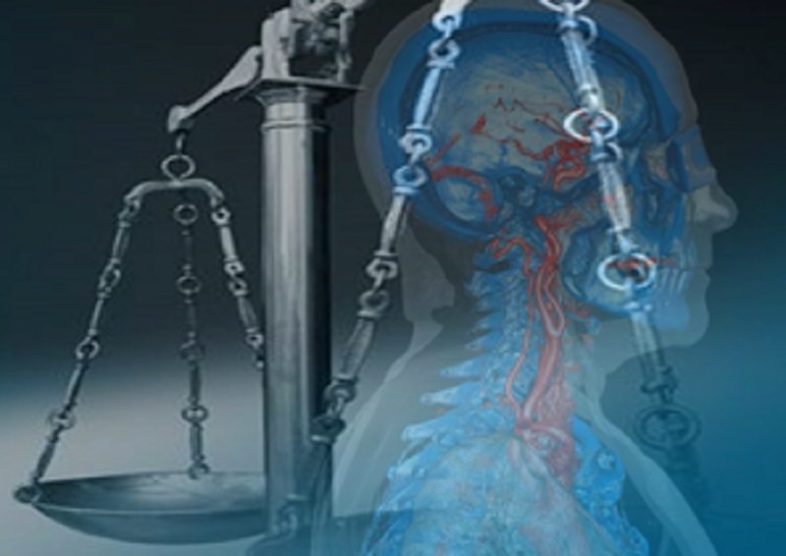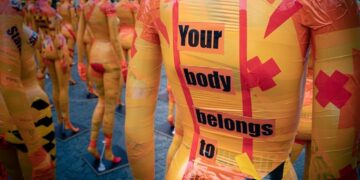My favorite thing about the true crime community is how discerning the fans are when it comes to information. Maybe it’s the thousands of hours of Forensic Files and Dateline that we’ve all watched, maybe it’s the natural cynicism we develop from reading volumes about the evils of humanity, but true crime enthusiasts can usually smell B.S. from a mile away. We don’t accept much on faith, and a person’s claims are only as good as the corroboration they can put behind it.
To prove my point, let’s look at the murder of Marie Philbrick. The state of Montana says that Bernard Pease Jr. killed Philbrick and tossed her away with the trash. But we know that just because the police say somebody is guilty doesn’t necessarily make it so. The Montana Innocence Project claims that Pease is an innocent victim of junk science and malicious prosecution. But we also know that just because the Innocence Project says that somebody is innocent doesn’t necessarily make it so. At least one of them is wrong, so let’s review the facts of the case and see if we can figure out who.
Marie Philbrick was a 23 year-old Native American woman living in Billings, Montana, in 1983. She was from South Dakota and had only been in Billings for a couple of months. She was a sex worker who lived with a man named John Salas and a woman named Brenda Cunningham. Salas was referred to as a “roommate” in court records from the time. That may be a polite euphemism, however, because according to the Innocence Project, Salas was Philbrick’s pimp and Cunningham was a fellow sex worker.
Philbrick was last seen by her “roommates” on the morning of November 24, 1983, which was Thanksgiving. Salas saw her walking downtown at about 3:00 a.m., and Cunningham saw her talking to a man in a yellow pickup at about 3:30 am. At trial, defense attorneys introduced two witnesses who claimed to have seen Philbrick as late as November 26. Both were employees at the hotel where Philbrick, Salas and Cunningham lived. On an eventual appeal, the Montana Supreme Court argued that those sightings were by witnesses who did not know Philbrick and were seeing a person they thought was her from a distance. The Supreme Court was ultimately not convinced of the hotel witness sightings.
A week and four hours after Cunningham claimed to have last seen Philbrick, on December 1, 1983, Philbrick’s nude body was discovered by a passerby on his way to work. Philbrick was laying in an alley in the snow beside two garbage cans. Her body was frozen and almost entirely drained of blood. She had suffered multiple stab wounds to the chest and her throat had been slit. The skin was sloughing off her ankle (likely from decomposition) and drag marks in the snow suggested that she had been dragged by the legs to the spot where she was abandoned.
Sorry, that was a brutal paragraph. Why are sex worker murders always so brutal? As if their lives aren’t difficult enough already, they have to suffer the most horrific deaths too? That seems especially unfair.
But I digress. The medical examiner estimated that Philbrick had been dead for approximately 5 to 10 days before she was found. Detectives observed that her left foot was more decomposed than the rest of her body and that there were ridges and dents in the foot. They also discovered a strand of orange yarn in Philbrick’s hair.
A little over a month later, on January 5, 1984, the owner of an auto shop about two blocks from where Philbrick’s body was found discovered a bloody sleeping bag and some carpet backing along a fence behind his shop. Officers collected it and found orange fiber, similar to what was in Philbrick’s hair, along with pieces of brick and a plumb bob, which is a tool commonly used in masonry.
The trash cans where Philbrick’s body was found were outside of an industrial building that housed a couple of different businesses. One of them was Pease Masonry. Detectives went to Pease Masonry on January 5, 1984, and spoke to Bernard Pease Sr., who consented to a search of the building. The search revealed orange shag carpet and a chunk of carpet backing that had been cut in a pattern that seemed to match the section found behind the auto shop. When the officers searched the wash bay area in the rear of the business, they found white cardboard boxes with blood on them, blood on the floor, a bloody paper napkin stuck to part of a box and a used condom with blood on it.
Detectives also noticed heating pipes on the floor of the wash bay. The pipes were dusty, except for a couple of areas where the dust had been rubbed off. The bumps and lines of those clean areas were consistent with the lines that detectives saw on Philbrick’s decomposed foot. The medical examiner also later determined that a hot and dry heat source, such as the heat pipe, could have accounted for why the foot decomposed faster than the rest of the body.
There were only four people who had access to the wash bay, all of them in the Pease family. Police got search warrants for the Pease’s home in Billings. In Bernard Pease Jr.’s bedroom, police found used and unused condoms, bondage pornography and women’s underwear with semen stains. In the business truck that Pease Jr. drove, a yellow and white truck, police found a bedsheet stained with what appeared to be blood.
Pease Jr. was eventually arrested and charged with murder. At trial, prosecutors called an expert who testified that the blood on the sleeping bag, the carpet backing, the bedsheet, the cardboard boxes, the used condom from the wash bay and the floor of the wash bay was all the same type as Philbrick’s blood. That isn’t always very persuasive, but Philbrick had one of the rarer blood types. A town the size of Billings, with 120,000 people, would only be expected to have about 80 to 120 people with Philbrick’s blood type.
Furthermore, the condom from the wash bay had semen in it that matched Pease Jr.’s blood type. None of this should be confused with DNA evidence. This all predated DNA.
Experts for the prosecution and the defense gave conflicting testimony about whether or not various hairs from the crime scenes matched the suspect and the victim. But it’s all kind of moot now that we know how unreliable and unscientific hair comparison actually was as a forensic science.
Pease Jr.’s ex-wife identified the bloody sleeping bag as a wedding gift that they had received and said that Pease Jr. had kept it after the divorce. Pease Jr. denied that he had ever seen the bloody sleeping bag.
Pease Sr. testified that Pease Jr. had gone out on the night of November 23, 1983, and that Pease Jr. did not see him again until about 9:00 a.m. on Thanksgiving morning. A friend of Pease Jr testified that he was with Pease Jr at a bowling alley until about 2:00 a.m. that morning.
Pease Jr. denied that he ever hired sex workers, but prosecutors introduced one witness who claimed to have patronized prostitutes with Pease Jr. before and another witness who claimed that Pease Jr. had talked about hiring a prostitute.

The Innocence Project has argued that the court was wrong to dismiss the witnesses who claimed to have seen Philbrick after November 24. Both witnesses testified that not only had they seen Philbrick on November 25 and November 26, but they had actually seen her with Salas and Cunningham. If the witnesses were correct, then Salas and Cunningham were lying, and to what purpose?
The Innocence Project also pointed out that no witnesses saw Philbrick with Pease Jr., no witnesses saw Pease Jr. near the trash cans on the night before Philbrick was found, and the wash bay was not sufficiently bloody to have been the scene of such a horrific stabbing.
My Take:
The two hotel employees had no reason to lie. They said that they saw Philbrick on November 25 and November 26 because they undoubtedly believed that they did. If they are correct, then my money would be on Salas for the murderer. It is tragically common for sex workers to be killed by their pimps, and I can think of no other logical reason why Salas and Cunningham would have lied about when they last saw Philbrick other than to cover for a murder.
But I don’t think the hotel employees are correct.
There is so much evidence pointing to Pease Jr. All of that blood was on items linked to Pease Jr. and in places that he had access to. His truck matched the description of the last person Cunningham saw Philbrick talking to. The blood types were a match in both directions, to the victim and to Pease Jr., and the victim’s blood type was pretty unique. The injuries to the victim’s decomposed foot seemed to match the pipes in the wash bay. There are just too many things to dismiss as a series of coincidences.
It seems likely to me that the hotel employees were mistaken about the day they saw Philbrick, especially since such an encounter would be an unremarkable event at the time. That’s an easier explanation than to dismiss the mountain of evidence against Pease Jr.
But buyer beware, I have been wrong before. Frequently. Multiple times today, as a matter of fact, and the day isn’t over yet. So just because I’m telling you that I think Bernard Pease Jr. killed Marie Phibrick, doesn’t necessarily make it so. Of course, being the discerning true crime aficionado that you are, you already knew that.
On the plus side, since the Innocence Project has taken the case up, we may get a definitive answer on this one. Assuming the evidence was preserved (which is a big assumption on a 37-year-old murder) all of those bloody items could potentially be tested for DNA. If any of the blood in the wash bay or Pease’s truck belonged to Philbrick, then I think we have our answer.
About the author: Barney Doyle has been a law enforcement officer since 2006 and currently works at a small office in rural Texas. His book, Reckless Speculation about Murder, is coming out May 1, 2020.
- Court Listener. (1986, Aug 08) State v. Pease, 724 P.2d 153. Retrieved from https://www.courtlistener.com/opinion/1211532/state-v-pease/
- Montanna Innocence Project. Bernard Pease. (2019). Retrieved from https://mtinnocenceproject.org/bernard-pease/
- Helena, Montana Daily News (2017, Nov 29) Montana Innocence Project reviewing a 1983 Billings homicide. Retrieved from https://helenair.com/news/state-and-regional/montana-innocence-project-reviewing-a-billings-homicide/article_8313c972-2342-5b4a-b842-40ef8a48229b.html













































